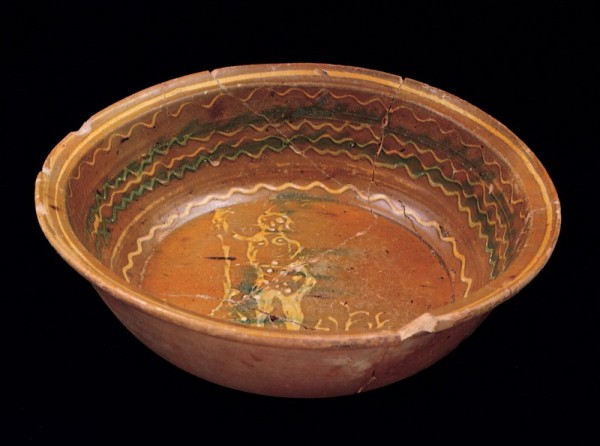
Presentation basin, southeastern Pennsylvania (likely Philadelphia), ca. 1730–1760. Trailed slipware. D. 14". (Courtesy, The National Society of The Colonial Dames of America in the Commonwealth of Pennsylvania at Stenton; photo, Gavin Ashworth.) This reconstructed bowl was recovered in 1982 at Stenton, James Logan’s plantation (see fig. 2), by archaeologist Barbara Liggett.

Stenton, James Logan’s country house and plantation, built 1723–1730. (Photo, The National Society of The Colonial Dames of America in the Commonwealth of Pennsylvania at Stenton.) The basin illustrated in fig. 1 was found in a cistern behind the home.
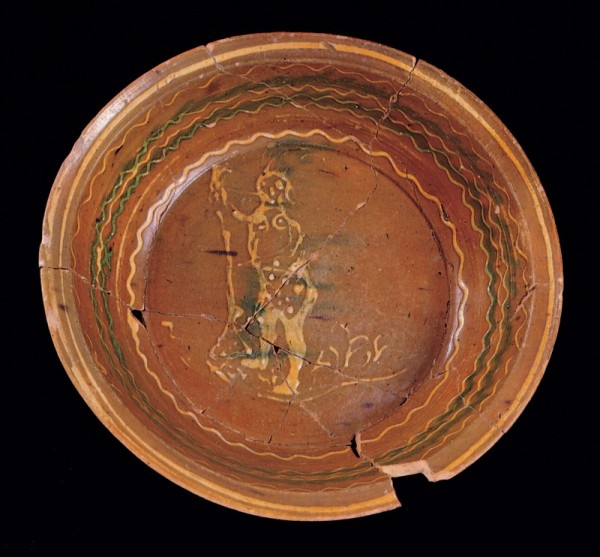
Detail of the basin illustrated in fig. 1. This slip-decorated Native American figure, with painted torso and tall rifle, represents Sa Ga Yeath Qua Pieth Tow, chief of the Maguas.
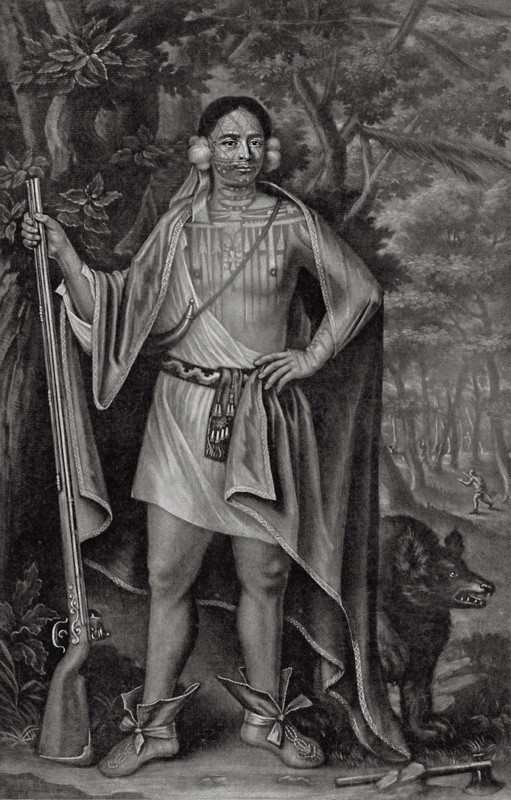
John Simon, Sa Ga Yeath Qua Pieth Tow, King of the Maguas, 1710. Mezzotint. 16 5/16 x 10 1/4". (Courtesy, Winterthur Museum, museum purchase.) This mezzotint is one of a set of four, after full-length oil portraits commissioned of John Verelst by Queen Anne.
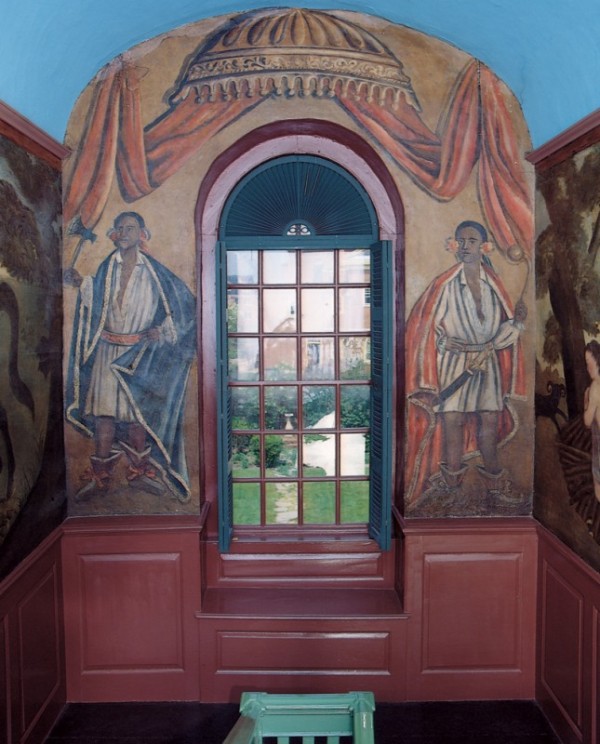
The murals on the stair landing in Archibald Macpheadris’s house (now known as the Warner House), ca. 1718–1720. (Courtesy, Warner House Association; photo, Richard Haynes.) Possibly the work of Nehemiah Partridge, the murals served as a reminder of the Iroquois promise in 1710 to be faithful British allies.
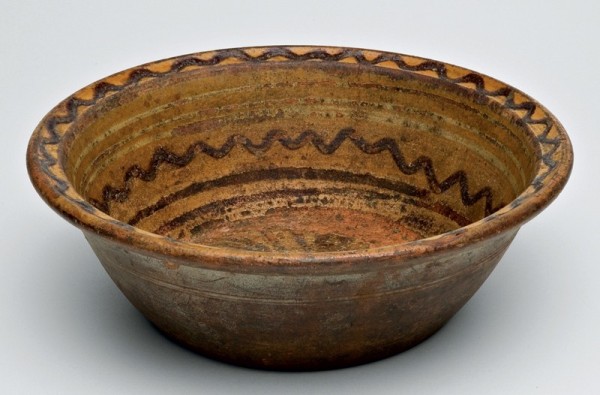
Basin, Bethlehem, Pennsylvania, early nineteenth century. Redware. H. 3 1/4", D. 10". Inscribed on exterior base: “Jos Rupp Jr / Ephrata / Lanc Co / Penn.” (Courtesy, Winterthur Museum, Gift of Mr. and Mrs. Orrin W. June.) The inscription alternatively suggests that the Stenton bowl could have been made on the Pennsylvania frontier.
